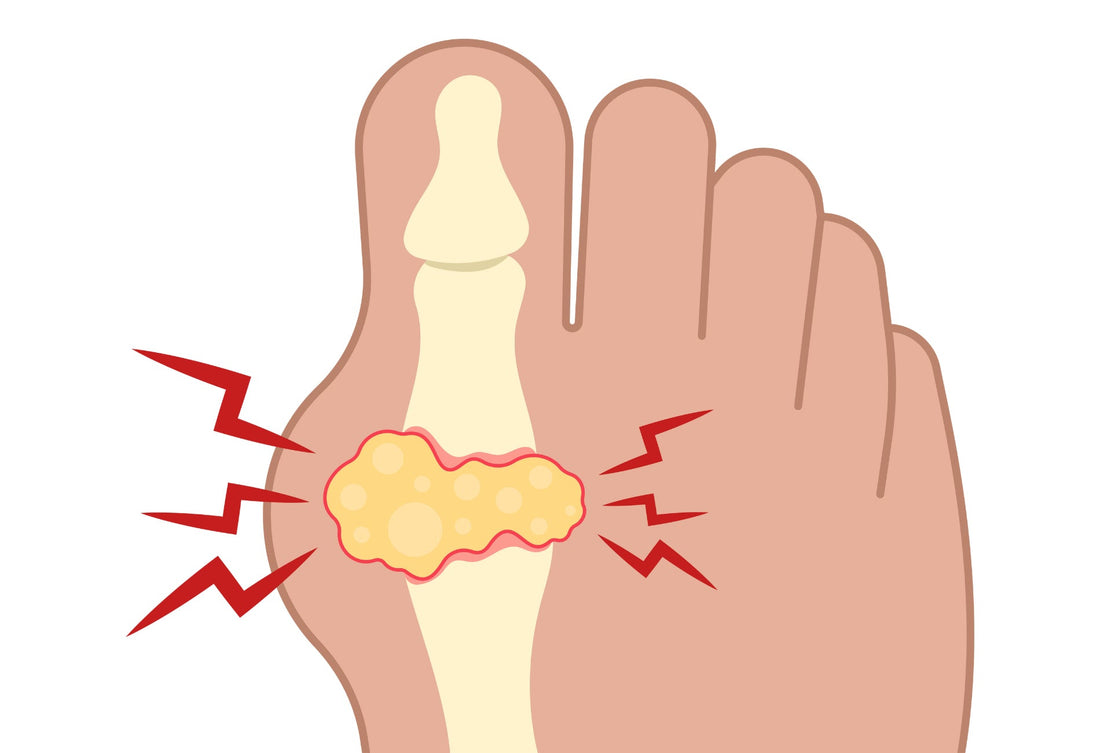
Gout: The Best Recovery Solution
Share
Gout is a form of inflammatory arthritis that occurs when uric acid levels in the blood become elevated, forming crystals in the joints. This condition causes intense pain, redness, swelling, and limited movement—most commonly in the big toe, but can also affect ankles, knees, wrists, and elbows.

Understanding the best recovery strategies is essential for anyone who wants to maintain an active lifestyle and minimize periods of disability caused by gout.
What is gout and why does it occur?
Gout is mainly related to factors such as:
- Diet rich in purines (found in red meat, seafood and alcoholic beverages, especially beer);
- Overweight;
- Insufficient water consumption;
- Some medical conditions (hypertension, diabetes, kidney failure).
The body accumulates uric acid because it produces too much or eliminates too little through urine, which favors the formation of crystals that inflame the joints.
How to Recover from Gout: The Best Solutions
Here are the most effective and recommended strategies for recovery during and after a gout attack:
1. Appropriate medication
- Nonsteroidal anti-inflammatory drugs (NSAIDs) such as ibuprofen;
- Colchicine to reduce inflammation;
- Corticosteroids in more severe cases (always with a doctor's prescription);
- Medicines that control uric acid (allopurinol, febuxostat) to prevent new attacks.
2. Rest and elevation
During the acute phase, the affected joint should be rested and elevated to reduce swelling.
3. Local ice
Applying ice (15-20 minutes, several times a day) helps reduce pain and inflammation.
4. Abundant hydration
Drinking plenty of water (2-3 liters per day) facilitates the elimination of uric acid by the kidneys and reduces the likelihood of new attacks.
5. Careful feeding
- Avoid red meat, seafood, alcoholic beverages and sugary soft drinks;
- Increase your consumption of fruits, vegetables, whole grains and low-fat dairy products;
- Moderation in animal protein and preference for plant sources.
6. Body weight control
Being overweight increases the risk of gout. Gradual weight loss (avoiding restrictive diets) significantly reduces the number and severity of gout attacks.
7. Moderate physical activity
Staying active during flare-ups helps control your weight and overall health, but during flare-ups, it's essential to rest.
The importance of medical monitoring
While lifestyle changes are essential, gout is a disease that requires medical monitoring. Only a healthcare professional can determine whether to start preventive medication and monitor uric acid levels.
Conclusion
The best gout recovery solution combines:
✅ Appropriate medication;
✅ Changes in diet;
✅ Correct hydration;
✅ Weight control;
✅ A healthy lifestyle.
With these strategies, you can not only recover more quickly from a gout attack but also prevent future ones. If you suffer from gout, talk to your doctor, adopt a balanced diet, and stay active—your body will thank you.
Recommended reading on our blog:


